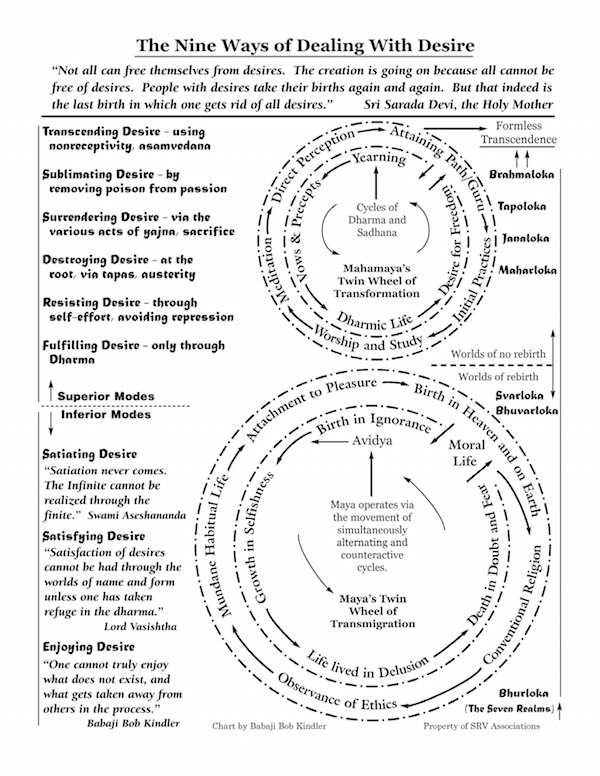 QUESTION: “I have been studying Yoga Vasishtha lately, especially with regard to dealing with
QUESTION: “I have been studying Yoga Vasishtha lately, especially with regard to dealing with
adharmic desires, and contemplating these teachings in light of Yoga, Vedanta, and other teachings mentioned. For example, you have mentioned how you witnessed Lex Hixon being too busy with sadhana to even have a restless mind, and thus never be tempted by adharmic desires or other ridiculous distractions. With all this said, I have come to the conclusion that one can simply abandon adharmic desires by replacing thoughts of them with those dedicated to sadhana, discrimination, and renunciation. Thus, it is not that adharmic desires are really a difficult problem, but rather that they can get put aside for higher things until the impressions that give rise to them exhaust themselves. Is this a good summary of these teachings with regard to what the great preceptors say about destroying adharmic desires and worldly addictions? Do the seers give us permission then to just be done with harmful desires here and now and never look back?”
ANSWER: “The unreal never exists; the Real never ceases to be,” says Sri Krishna in the Bhagavad
Gita. Anything and everything adharmic should not be allowed to intrude on life simply on the
strength of this assertion alone. In the Avadhuta Gita it is stated similarly, that, “Ignorance is
unreal; then how can it cause any real doubt?”
Two things have to be remembered, then, in this context: first, that adharma is unreal; and
two, that maya, by its very nature, will insinuate itself into the picture if the seer becomes lackadaisical
and allows it to do so. In other words, “permission” to do away with the unreal should
not have to be given. If the practitioner finds that negative thoughts (klishta vrittis) have come
into the mind, he simply gets rid of them with positive ones (aklishta vrittis), just as you mentioned
above in the case of Lex Hixon, our SRV Founder — though in his case he was long past
having anything to do with negative thoughts. His mind was naturally geared towards
Enlightenment.
As to your first reference above, yes, you have summated the process and practice fittingly.
In Vedanta and Yoga, one “waters the flowers and not the weeds” (pratipakshabhavanam).
Soon, the weeds die away of themselves. There are other ways of dealing with detrimental
desires, some swift and some more patient, but the end result ought to rid the mind of them forever
so that no further sign of them will be seen or felt. For help with this please see and apply
the chart on “The Nine Ways of Dealing with Desire” at the end of this lesson.

